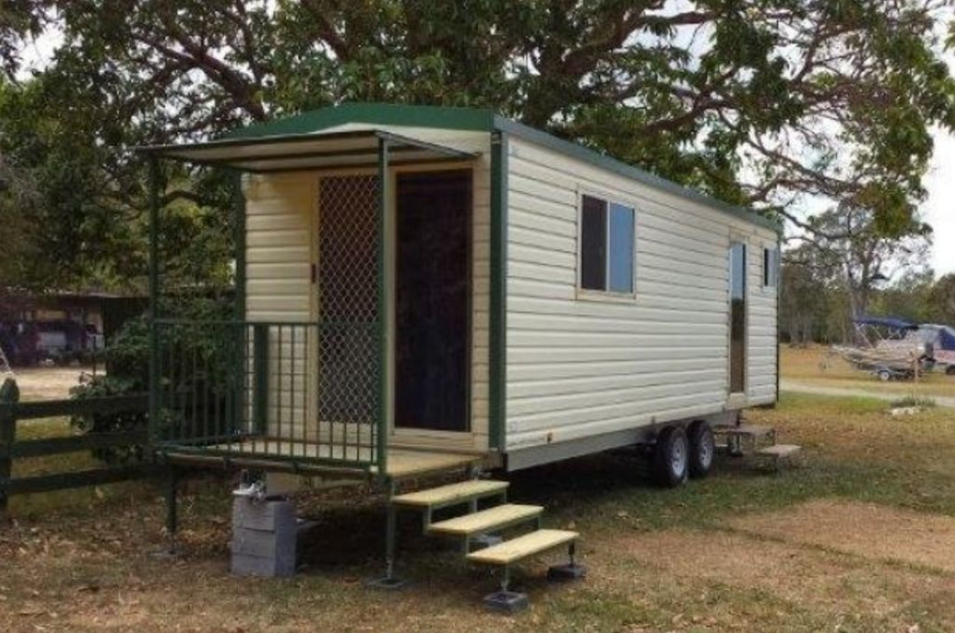
Parking a caravan in your backyard or driveway is an Australian property right that’s as old as Vegemite and almost as common.
But what if the caravan looks like a small holiday cabin on wheels and gets brought in on a crane?
“Go for your life” is the answer from the NSW Land and Environment Court (LEC).
In a decision that could pave the way for many such “mobile structures” to pop up across the state, the court has upheld a Sydney family’s right to put one on their land without getting development consent from the local council.
In an unequivocal judgment, Senior Commissioner Susan Dixon found that the Russell family of Currans Hill in south-west Sydney had every right to put the structure in their backyard in October last year.
It overturned an order from Camden Council which had claimed that the caravan was an unauthorised development and demanded that it be removed.
Crucial to the decision was the fact that, despite having some cabin-like characteristics, the wheels and registration meant it could still be considered a caravan.
During the course of a two-day hearing earlier this year, the court heard that Korena and George Russell had installed the van as a residence for their daughter and her partner.
The structure has one bedroom with en suite and a kitchenette, and is connected to plumbing, sewer, gas and electricity services.
Valued at a tick under $50,000, it is also has wheels, lights, a number plate, and is registered as a caravan with NSW Roads and Maritime Services.

“The Russell family is a husband and wife and four daughters and they’ve got a three-bedroom house,” said Vito Russo, the CEO of VanHomes which sold the van to the Russells and helped them throughout the case.
“So you can see that there’s pressure on them in terms of space.
“They’ve got young adult kids growing up and going into the workforce for the first time. It’s very difficult for them to get into the property market so this was a good option for them.”
But Camden council disagreed.
After inspecting the structure, the council informed the Russells that their van was an unauthorised development and had to be removed.
Rather than succumbing to the council’s demands the Russell family got themselves a solicitor, a top Sydney barrister and appealed the council’s decision to the LEC.
The key point of contention in the case was whether or not the structure was a “mobile dwelling” under the Local Government Act.
Camden council accepted that the caravan was a “portable device”, thus satisfying the first part of the definition.
“On that basis, the Council submitted that the mobile structure was not being used for human habitation and is thereby outside the definition of moveable dwelling,” Senior Commissioner Dixon said in her judgment.
However, the Commissioner rejected this argument.
“There can be no doubt that the structure is a caravan used for human habitation and thereby within the definition of a moveable dwelling,” she said.
“On that basis, there is no need for any development approval for the registered caravan on the site and the order issued by the council … requiring the removal of the structure from the premises, is invalid.”
Mr Russo said the judgment cleared the way for others to install mobile structures, particularly those facing the mammoth task of breaking into the property market.
“The judgment sets up for the next generation to get a head start in the housing market because it essentially says, ‘yes, you can have a tiny home of this kind in your backyard.' It allows a young couple or individual to have their own space while they’re saving up for a deposit."
He said it was also an opportunity for older folks struggling to find an affordable retirement home.
“Their children can put a compliant moveable structure like this into their backyard at relatively low cost." - Vito Russo, VanHomes CEO.
This article originally appeared on Domain

